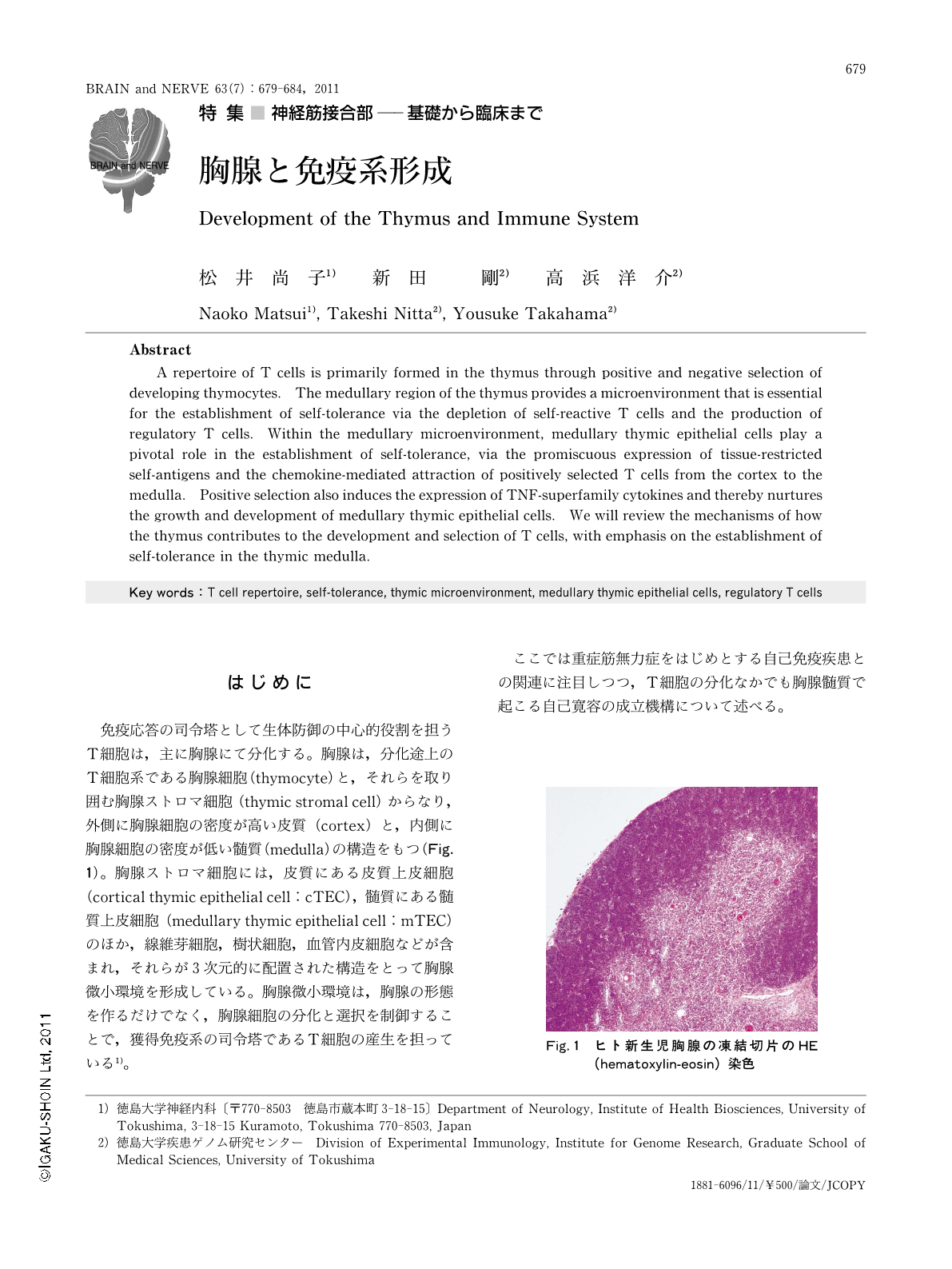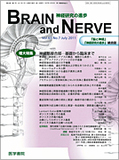Japanese
English
- 有料閲覧
- Abstract 文献概要
- 1ページ目 Look Inside
- 参考文献 Reference
はじめに
免疫応答の司令塔として生体防御の中心的役割を担うT細胞は,主に胸腺にて分化する。胸腺は,分化途上のT細胞系である胸腺細胞(thymocyte)と,それらを取り囲む胸腺ストロマ細胞(thymic stromal cell)からなり,外側に胸腺細胞の密度が高い皮質(cortex)と,内側に胸腺細胞の密度が低い髄質(medulla)の構造をもつ(Fig.1)。胸腺ストロマ細胞には,皮質にある皮質上皮細胞(cortical thymic epithelial cell:cTEC),髄質にある髄質上皮細胞(medullary thymic epithelial cell:mTEC)のほか,線維芽細胞,樹状細胞,血管内皮細胞などが含まれ,それらが3次元的に配置された構造をとって胸腺微小環境を形成している。胸腺微小環境は,胸腺の形態を作るだけでなく,胸腺細胞の分化と選択を制御することで,獲得免疫系の司令塔であるT細胞の産生を担っている1)。
ここでは重症筋無力症をはじめとする自己免疫疾患との関連に注目しつつ,T細胞の分化なかでも胸腺髄質で起こる自己寛容の成立機構について述べる。
Abstract
A repertoire of T cells is primarily formed in the thymus through positive and negative selection of developing thymocytes. The medullary region of the thymus provides a microenvironment that is essential for the establishment of self-tolerance via the depletion of self-reactive T cells and the production of regulatory T cells. Within the medullary microenvironment,medullary thymic epithelial cells play a pivotal role in the establishment of self-tolerance,via the promiscuous expression of tissue-restricted self-antigens and the chemokine-mediated attraction of positively selected T cells from the cortex to the medulla. Positive selection also induces the expression of TNF-superfamily cytokines and thereby nurtures the growth and development of medullary thymic epithelial cells. We will review the mechanisms of how the thymus contributes to the development and selection of T cells,with emphasis on the establishment of self-tolerance in the thymic medulla.

Copyright © 2011, Igaku-Shoin Ltd. All rights reserved.


